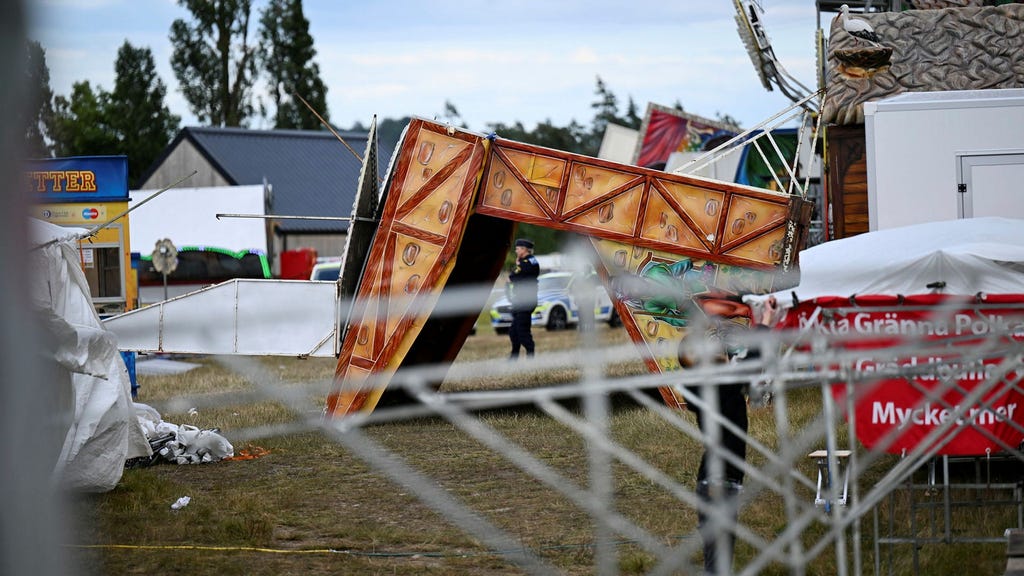The tragic incident at the Kiviks market last summer, where a man lost his life after being crushed by an overturned chocolate wheel kiosk, has reached a somber conclusion with the prosecutor’s decision to drop the preliminary investigation. While the initial shock and grief surrounding the event remain, the absence of criminal negligence has led to the closure of the case, leaving a void of legal accountability but a lingering need to understand the circumstances that led to this devastating accident. This detailed examination will delve into the incident, the subsequent investigation, and the factors that likely contributed to the prosecutor’s decision.
The Kiviks market, an annual event in the picturesque Österlen region of southern Sweden, is renowned for its vibrant atmosphere, local produce, and festive attractions. The market typically attracts large crowds who come to enjoy the lively ambiance and experience the diverse offerings. Amidst this bustling environment, the seemingly innocuous chocolate wheel kiosk, a common feature at fairs and markets, became the focal point of tragedy. The incident unfolded rapidly, likely catching market-goers and vendors off guard. Strong winds, a known risk factor at outdoor events, seemingly overcame the kiosk’s anchoring, causing it to topple over onto the unfortunate victim. The chaotic scene that ensued was undoubtedly traumatic for those who witnessed the accident and its immediate aftermath.
The ensuing investigation, led by local authorities, sought to ascertain the cause of the accident and determine whether any parties could be held criminally liable. This process typically involves meticulous examination of the scene, collection of witness testimonies, and assessment of relevant documentation, including safety regulations and permits. Investigators would have scrutinized the structural integrity of the kiosk, its anchoring system, and the prevailing weather conditions at the time of the incident. The investigation likely explored whether the kiosk owner had complied with all necessary safety protocols and if the market organizers had taken adequate precautions to mitigate potential risks posed by adverse weather. The primary focus would have been to establish if any negligence, either on the part of the kiosk owner or the market organizers, contributed to the tragedy.
The prosecutor’s decision to discontinue the preliminary investigation suggests that, despite the tragic outcome, there was insufficient evidence to support criminal charges. This doesn’t diminish the gravity of the event or absolve those involved from moral responsibility, but it reflects the legal threshold for criminal negligence. In Swedish law, proving criminal negligence requires demonstrating a clear breach of duty of care that directly resulted in the victim’s death. The prosecutor likely concluded that while the accident was undoubtedly preventable, the evidence did not establish a clear enough link between any specific act of negligence and the tragic outcome. Factors such as the unforeseeable nature of strong gusts of wind, the inherent risks associated with temporary structures in open-air environments, and the potential absence of clear guidelines regarding wind resistance for such kiosks may have contributed to this decision.
The tragic incident at the Kiviks market underscores the inherent risks associated with outdoor events and the critical importance of stringent safety measures. Even seemingly innocuous structures, like the chocolate wheel kiosk, can become hazardous in adverse weather conditions. The absence of criminal charges in this case does not negate the need for a thorough review of safety protocols at similar events. Market organizers have a responsibility to assess and mitigate potential risks, including implementing stricter guidelines for securing temporary structures, establishing clear communication protocols for adverse weather events, and providing adequate training to vendors on safety procedures. Similarly, kiosk owners and operators must ensure that their structures meet safety standards and are properly anchored to withstand foreseeable weather conditions. This unfortunate incident serves as a poignant reminder of the delicate balance between creating a vibrant and enjoyable atmosphere at public events and ensuring the safety of all attendees.
Moving forward, it’s crucial to learn from this tragedy and implement changes that prevent similar incidents from occurring. This might involve revising existing regulations regarding temporary structures at outdoor events, developing more robust safety guidelines, and enhancing communication and coordination between event organizers, vendors, and local authorities. The focus should be on proactive measures that prioritize safety without unduly restricting the enjoyment and economic vitality of these community events. Ultimately, the legacy of this tragic accident should be a renewed commitment to ensuring the safety and well-being of all those who participate in and enjoy public gatherings. This includes a continuous evaluation of safety protocols, the adoption of best practices, and a shared responsibility between organizers, vendors, and attendees to create a safe and enjoyable environment for everyone.














